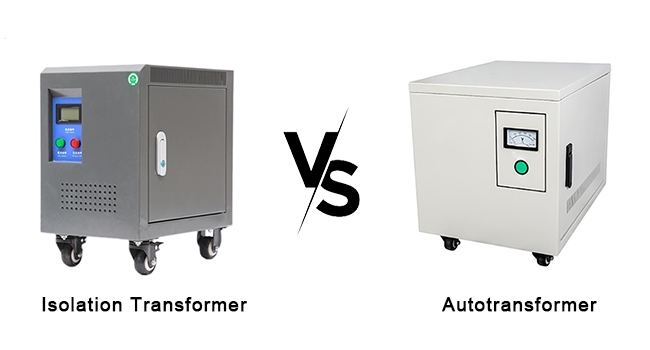Isolation Transformer vs. Autotransformer
An isolation transformer is an electrical transformer with a primary and secondary coil winding. These windings are separated by insulation. This insulation limits the risk of electrocution when the active parts and earth are touched simultaneously. An autotransformer is an electrical transformer with only one winding. The term "auto" refers to a single coil acting alone, not to any kind of automatic mechanism. In an autotransformer, portions of the same winding act as both the primary and secondary sides of the transformer.
So what's the difference between the two kinds of transformers? In this article, ATO will introduce something about this topic in 3 aspects.

The Difference in Coil Structure:
The primary and secondary coils of the isolation transformer are Independent of each other. The voltage output of the secondary side is generated by the mutual inductance between the coils. The output voltage is also calculated according to the turns ratio of the coil between the primary and secondary sides. Therefore, if it is a three-phase isolation transformer, It has six coils, and two coils on each phase are combined into a whole in the form of inner and outer sets.
The Difference in Operating Modes:
In the operation of an autotransformer, the input side and the output side are both electrically and magnetically connected. This is because the output voltage of the common part is the induced voltage generated by the self-inductance of the coil. It is used in the coil In the alternating magnetic field, the induced current is used to achieve the induced voltage. On the other hand, since the primary coil and the secondary coil of the autotransformer are themselves a coil, the input and output sides are directly connected together during operation, but the output voltage has changed. Therefore, there is electricity in the operation of the autotransformer. There is also a magnetic connection. In a three-phase four-wire power grid, if the human body accidentally touches any non-neutral output terminal of the autotransformer, there is a danger of electric shock.
In the operation of the isolation transformer, because the primary coil and the secondary coil are not connected, but independent of each other, the isolation transformer is only connected magnetically and not electrically connected. During operation, the human body accidentally touches the output of the isolation transformer When the single terminal of the isolation transformer is generally not dangerous, it is because the input and output of the isolation transformer are not isolated from each other and cannot communicate with each other. It actually plays a role of isolation. Therefore, the isolation transformer has another name-safety transformer.
The Difference in Function of Improving Power Quality:
The primary and secondary sides of the autotransformer are directly connected, and the interference in the primary side grid will be directly added to the load of the transformer. At the same time, the interference generated by the load will also be added to the primary side grid to interfere with other loads in the same grid equipment.
The isolation transformer is different. The interference in the primary side grid is partially attenuated or isolated due to the characteristics of the coil itself that hinders the change of the alternating current. Therefore, the interference added to the secondary side load is less than that of the autotransformer.
